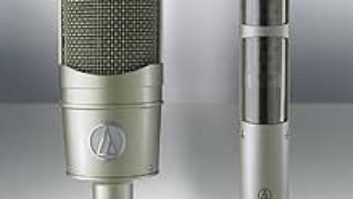NEW YORK, NY—Advancements in microprocessing technology allow for an increasing number of affordable digital recording tools to be created with each passing year. At the same time, the holidays tend to mark the arrivals of the latest consumer—and specifically, tablet-based—technologies suited for pro audio applications. Team those with the 139th AES Convention, and it’s easy to get a glimpse of what might become the next mixing paradigms.
Solid State Logic’s new Sigma Delta, an upgrade to its Sigma remote controlled analog summing system, was introduced at the 139th AES Convention. For example, Pro Tools | Dock was demonstrated at AES—Avid’s PT | Control iOS-associated, iPad Air 2-ready interface featuring soft keys and knobs, 16 and 8, respectively; two touch strips, horizontal and vertical; transport section; a jog wheel and more. Just days later, the new 12.9-inch (78 percent larger) Apple iPad Pro was announced to the world, delivering USB 3.0 bandwidth to four separate ports, along with other attractive features. The result was a one-two punch of Avid and Apple creating new approaches for recordists to adopt, in the process nudging power users closer to accepting tablets for work. While not aimed at all users, the allure of a touch-operated recording device based around what is essentially a snapped-off MacBook Pro screen could become increasingly hard to argue against. Something as simple as larger dimensions and a multi-touch GUI imbues the concept with “pro” appeal, and ultimately may make a plausible argument for choosing a $1,000-plus loaded iPad Pro over a MacBook Air.

On the flip side, while iPads have gotten bigger, new “large” mixing consoles have gotten smaller—which is only fitting, as many new large tracking spaces are also a “smaller large” compared to the legendary facilities of yesteryear. While there might be fewer new, big studios around, they still enter the world quite large at the corporate and elite levels, in schools and universities, and in spaces owned by an increasingly enviable few individuals. Schools, in fact, are a uniquely beneficial sector of the large-format console manufacturers’ total market; they serve an ever-increasingly sophisticated student body that is often well-versed with DAW-centric recording upon arriving on campus. Not surprisingly, however, those same students have likely never used or even seen “world-class” analog processing as is found in the places they ultimately want to work. Manufacturers and universities are teaming together to change that, in an appropriately collaborative effort to truly prepare graduates for all possible professional settings.
A new tool seemingly intended for educational needs is Solid State Logic’s new Sigma Delta, an upgrade to the Sigma remote controlled analogue summing system. Most simply explained, SSL’s Delta-Control crossplatform (iOS, Mac or PC) Remote Control app makes the Sigma SuperAnalogue mix engine and monitor switcher fully remote-controllable via software running on a range of networked devices. Thus, for example, students can refine their mixes before arriving to valuable time slots in an advanced mixing lab on their school’s Duality console, for instance, gaining the kind of experience not available to just anyone with a DAW.
At the 139th AES Convention’s Expo, AMS-Neve unveiled its BCM10/2 MK2, an accurate reproduction of the original early-’70s “sidecar” with music production-friendly updates. Elsewhere on this year’s AES exhibition floor, analog tech-centric booths were where many attendees found their inspirational gear. Since vibe and hard-to-measure factors like taste allow (or force) many technologies to coexist in pro audio, analog mixing consoles remain a popular hub of musician-centric recording environments, and glowing racks of Vu-metered, retro-futurist processors have become an evergreen element of many studios’ aural décor.

Showcasing pro-audio types’ tendencies to fuse decades-old circuitry with DAWs, AMS Neve showed its digitally-controlled analog Genesys Black recording console/DAW controller alongside the company’s buzzed-about 139th AES-debuted product: the 100-percent analog BCM10/2 MK2, an accurate reproduction of the original early-’ 70s “sidecar” with music production-friendly updates, thoughtfully-expanded features and more.
“There’s a whole new generation of people coming up right now, dipping their toes in analog-land for the first time, while others are rediscovering it,” explained technical product specialist James Townend, remarking on the Genesys’s genesis. Meanwhile, reveling in the sound of 1970s Neve evolution, chief of Analog Design Robin Porter breezed through a history of the brand’s musical appeal—through 8028 to 8078 desks—to show how the BCM10 was co-opted for music recording though it was a broadcast console in its day. Creative users ultimately define the gear, he pointed out.
Beyond marquee products like mixers, at each AES Convention microphones and front-end gear retain a powerful allure amongst audio pros because an increasingly educated marketplace has learned the importance of input quality over post-tracking editing and digital manipulation.
Yes, anyone who cares now knows that good microphones, a high-quality pre-digital input path and a good-sounding environment are the foundations of superior tracks, yet it’s ultimately the extremes—bleeding-edge, low-cost tools and proven high-end technologies—that continue to dictate the future of music production and recording, as many professionals continue to work most comfortably somewhere in between the two points.


